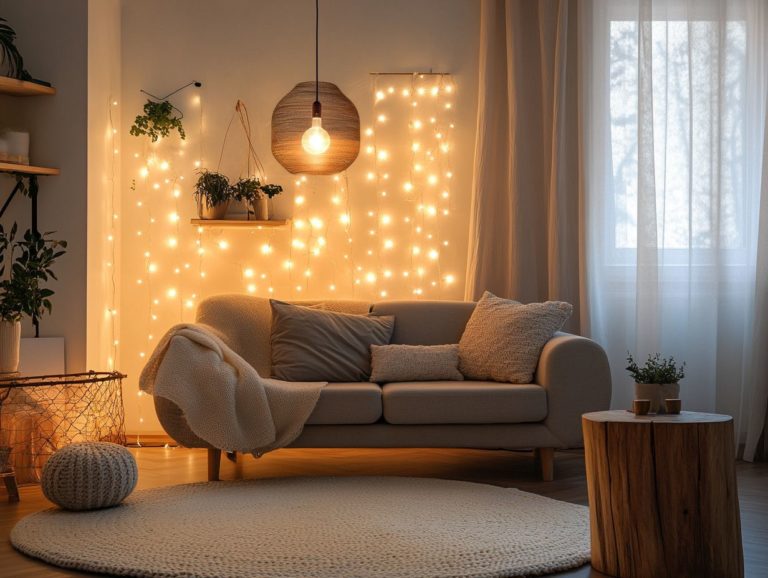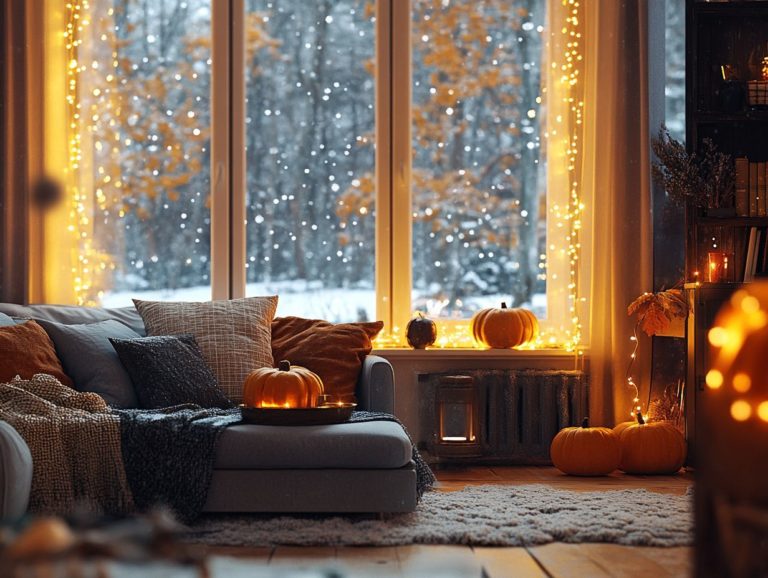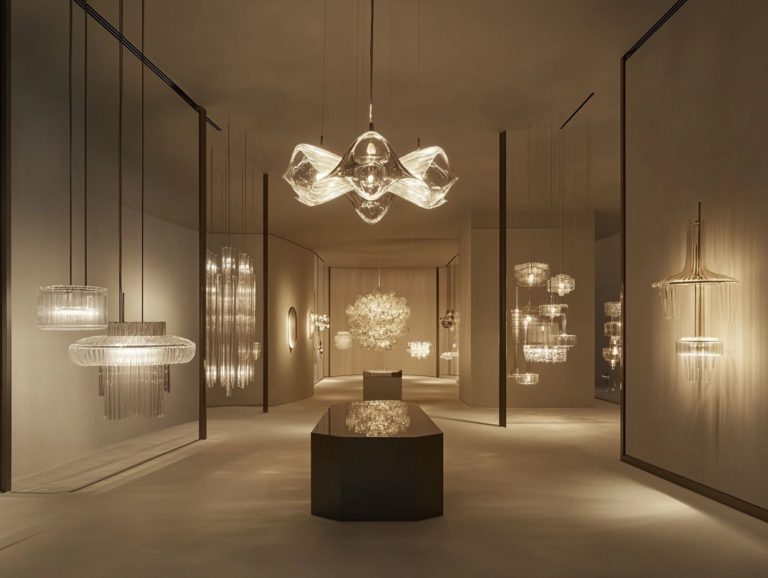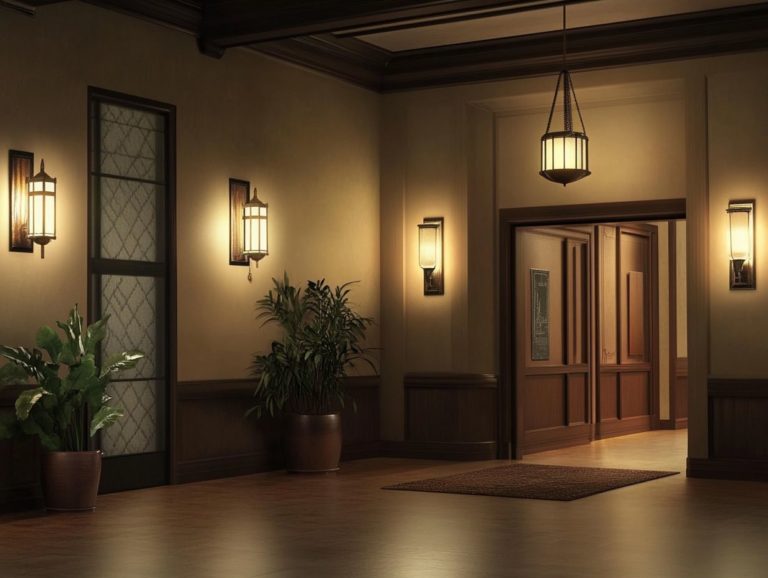“How to Choose the Right Light Bulb for Your Home”
Light bulbs may seem like a straightforward purchase, yet selecting the right one can significantly impact the ambiance and energy efficiency of your home.
With a variety of bulb types available, understanding their distinct characteristics is essential. This guide outlines key factors to consider, such as wattage, brightness, and color temperature, empowering you to make informed choices for every room.
This guide also covers the lifespan, cost, and environmental impact of different bulbs, ensuring you illuminate your space beautifully while being mindful of your budget and the planet.
Contents
- Key Takeaways:
- Understanding Light Bulb Types
- Factors to Consider When Choosing a Light Bulb
- Choosing the Right Bulb for Each Room
- Considerations for Choosing Light Bulbs
- Frequently Asked Questions
- What types of light bulbs are available for homes?
- How can I tell if a light bulb is bright enough?
- Which type of light bulb is the most energy-efficient?
- How do I know which color temperature is best for my home?
- Is it important to consider the wattage when choosing a light bulb?
- Can I use LED bulbs in my existing fixtures?
Key Takeaways:

- Understand the different types of light bulbs available to make informed decisions.
- Consider wattage, color temperature, and energy efficiency when selecting a bulb for your home.
- Choose a bulb suitable for each room, taking into account lighting needs and activities.
Understanding Light Bulb Types
Knowing light bulb types helps you choose the right lighting system that aligns with your needs, significantly influencing energy efficiency, lighting quality, and the overall ambiance of your space.
Whether you prefer the warm glow of traditional incandescent bulbs or the energy savings and longevity of modern LED bulbs, each type has its unique role in creating ambient, task, and accent lighting.
Don t overlook fluorescent lamps and halogen bulbs; they offer distinct benefits like varying color temperatures and brightness efficiency.
Explore these options now to find the best fit for your space!
Overview of Different Bulb Types
Different bulb types offer a range of lighting experiences, each meticulously crafted for specific applications and personal preferences, elevating your artificial lighting solutions.
Consider the warm glow of incandescent bulbs, which create a classic atmosphere with their traditional filament design. Then there are energy-efficient fluorescent lamps, celebrated for their durability and longevity, each serving a unique purpose in your space.
Don t overlook the versatile LED bulbs, renowned for their impressive lifespan and low energy consumption, making them a favorite for those who prioritize eco-friendliness. Halogen bulbs, a variation of incandescent, emit a brilliant white light and are often found in track lighting and outdoor fixtures.
Each bulb type has distinct construction characteristics that cater to diverse needs and environments, ensuring that you can find the perfect choice for every lighting scenario.
Factors to Consider When Choosing a Light Bulb
When you re on the hunt for the perfect light bulb, several important factors deserve your attention. Consider wattage, brightness, color temperature, and energy efficiency each plays a pivotal role in the performance and suitability of your lighting system.
By grasping how these elements interact, you can make informed choices that enhance both energy consumption and visual comfort, all while seamlessly complementing your interior design.
Wattage and Brightness
Wattage and brightness are essential when selecting the right light bulb, as they directly influence both the electrical energy consumed and the luminosity produced in your space.
Understanding the difference between watts and lumens is vital for making informed choices. While watts measure the energy a bulb uses, lumens indicate the actual light output. For example, LED bulbs are crafted to deliver high brightness with much lower wattage compared to traditional incandescent bulbs, positioning them as a more energy-efficient choice. This efficiency not only reduces your electricity costs but also lessens your environmental footprint.
Therefore, as you evaluate your options, consider how various bulb types will impact both the brightness in your room and your overall energy consumption.
Start choosing your ideal light bulb today!
Color Temperature
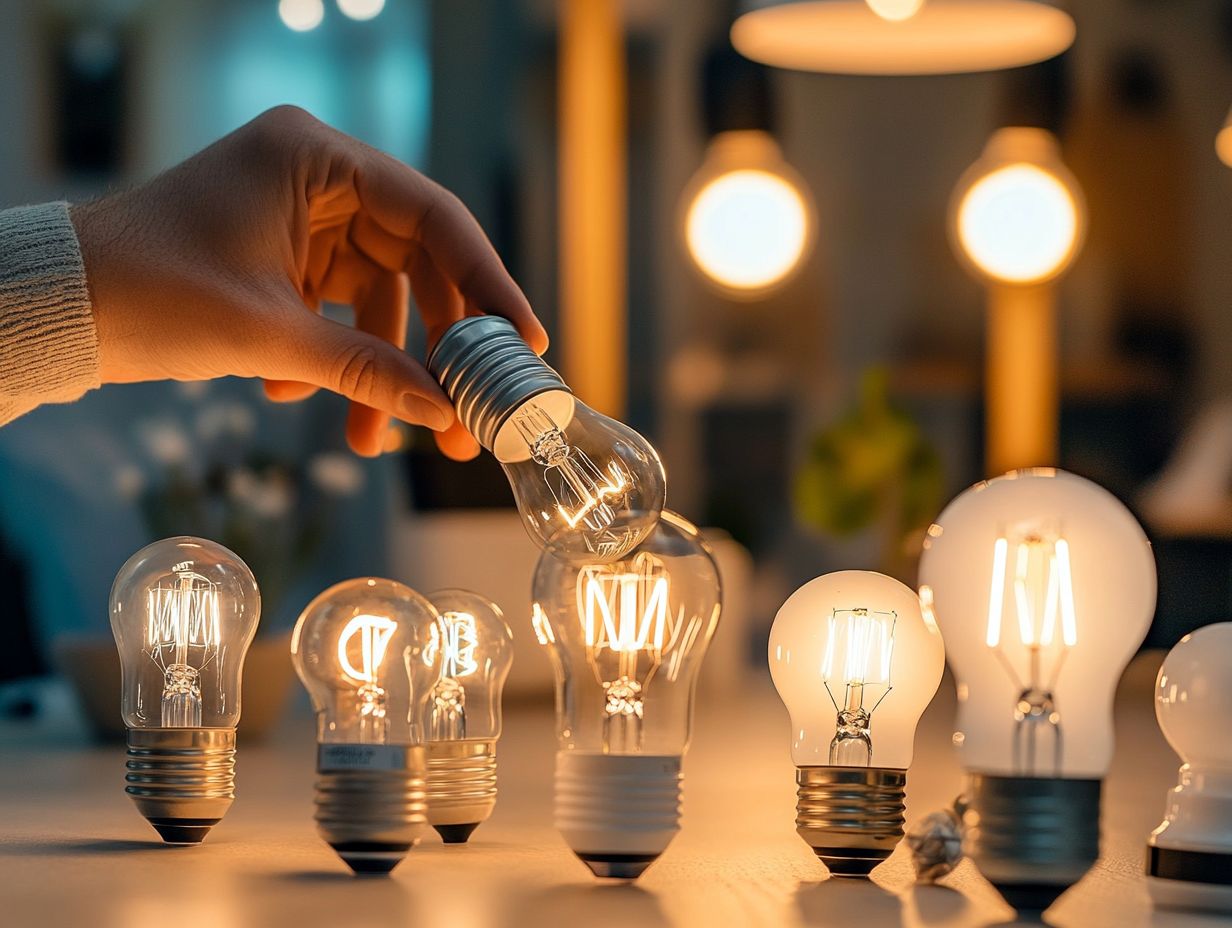
Color temperature is a pivotal element in lighting design that influences the mood and functionality of any space. It defines the warmth or coolness of light, measured in Kelvins on the Kelvin scale. This measurement shapes how we perceive and use spaces.
You ll find yourself choosing between warm lights typically below 3000K that create a cozy atmosphere perfect for relaxed settings, and cool white lights, usually between 3000K and 5000K, that promote alertness and focus, enhancing productivity in workspaces.
Daylight, ranging from 5000K to 6500K, replicates natural sunlight and is especially beneficial for activities needing precision, such as intricate crafts.
Different bulb types, including incandescent and LED, produce varying color temperatures that affect aesthetic appeal, energy efficiency, and longevity. Making the right choice is essential for achieving your desired ambiance.
Energy Efficiency
Energy efficiency is a crucial factor in lighting choices, especially with the rise of technologies like LED and compact fluorescent lights (CFL), which significantly reduce electricity consumption compared to traditional bulbs.
It s not just about immediate savings; switching to efficient lighting options plays a key role in long-term sustainability. Incandescent bulbs consume a lot of energy and require frequent replacements, while LEDs and CFLs help lower your energy bills and have a longer lifespan, reducing waste. This not only benefits your wallet but also aligns with environmental conservation efforts.
As you seek to make sustainable choices, opting for energy-efficient lighting becomes a smart financial decision and a commitment to reducing carbon footprints and embracing greener technologies.
Choosing the Right Bulb for Each Room
Selecting the ideal bulb for each room is vital for crafting the perfect atmosphere and functionality. Whether you’re seeking ambient lighting for a warm, inviting mood, task lighting for focused activities, or accent lighting to showcase architectural details and artwork, your bulb choice matters.
Living Room
In your living room, ambient lighting is essential for creating a welcoming atmosphere. Choosing the right light bulbs is key to achieving that warm, inviting glow.
For a cozier atmosphere, choose bulbs with a color temperature around 2700K. This range emits a soft, warm light that beautifully mimics traditional incandescent bulbs, profoundly influencing the mood for relaxation or lively social gatherings.
Energy-efficient LED options are favored for their long lifespan and lower energy consumption while still providing that desired warmth. Incorporating these bulbs can transform your living room into a beautifully illuminated space without the worry of rising energy costs.
Kitchen
In your kitchen, task lighting is crucial for efficient cooking and food preparation. You need bright, focused light, best provided by efficient bulbs like LEDs. This illumination enhances visibility and ensures safety while handling sharp utensils and navigating hot surfaces.
Choosing bulbs with a high Color Rendering Index (CRI) helps ensure accurate color perception. This feature allows you to assess the ripeness of your ingredients and perfect the presentation of your dishes. LED bulbs are beneficial, consuming less energy and leading to lower electricity bills while offering exceptional brightness.
Thoughtfully selecting the right lighting can create an inviting and functional cooking environment that meets all your culinary needs.
Bedroom

Your bedroom deserves soft ambient lighting. This creates a serene environment that invites relaxation.
Warm light tones transform your space into a peaceful retreat after a long day. Incandescent bulbs offer a gentle warmth that wraps the room in comfort.
Dimmable options let you easily adjust brightness, enhancing your experience. Whether you need a vibrant atmosphere for reading or a softer glow for winding down, thoughtful lighting can turn your bedroom into a cozy haven.
Bathroom
In your bathroom, good task lighting makes daily routines easier. Bright light ensures clarity during grooming activities.
Right lighting enhances tasks like shaving and applying makeup. The type of bulb you choose shapes both visibility and mood.
Fluorescent lamps give bright, even light with minimal shadows, making them great for bathrooms. Meanwhile, LED bulbs combine high brightness with energy efficiency, saving you money and lasting longer.
Finding the right balance between brightness and energy savings creates a functional, eco-friendly bathroom.
Considerations for Choosing Light Bulbs
When selecting light bulbs, consider bulb lifespan, cost, and environmental impact. These factors shape your decision-making and satisfaction.
Bulb Lifespan
Bulb lifespan is crucial for value. You’ll find that LED lights last much longer than traditional incandescent bulbs.
Incandescent bulbs last around 1,000 hours, while many LED options shine for 25,000 hours or more. This longevity reduces how often you replace bulbs and lowers maintenance costs.
As the lifespan increases, so do potential savings. Plus, energy-efficient LEDs lead to lower electricity bills, making them a smart investment.
Cost and Budget
When budgeting for lighting, weigh the initial cost against long-term energy use. These factors can significantly impact your expenses.
Choosing energy-efficient options, like LED bulbs, reduces initial costs and saves you money over time with lower electricity bills.
Don’t just look at upfront costs. Consider the total cost of ownership to make the best choice for your budget.
Environmental Impact

The environmental impact of your lighting choices is becoming increasingly significant, especially regarding energy consumption and the sustainability of different bulb types.
As you navigate the balance between energy needs and environmental responsibility, consider both the efficiency of your lighting choices and their environmental impact. Each decision makes a difference.
Switching to sustainable lighting options decreases reliance on fossil fuels. It lowers greenhouse gas emissions and helps foster a healthier planet.
Explore advances in solar-powered lighting and smart technology. These options can enhance your lighting experience while promoting a greener future.
Frequently Asked Questions
What types of light bulbs are available for homes?
Several types of light bulbs are commonly used in homes, including incandescent, LED, CFL, and halogen bulbs.
How can I tell if a light bulb is bright enough?
Lumens measure how bright a light bulb is. The higher the lumens, the brighter the light. You can find lumen information on the packaging of the bulb.
Which type of light bulb is the most energy-efficient?
LED bulbs are the most energy-efficient option for homes. They use less energy and last longer than traditional incandescent bulbs.
How do I know which color temperature is best for my home?
Color temperature is measured in Kelvin and indicates the warmth or coolness of a light bulb’s color. For a warm and cozy atmosphere, choose bulbs with a lower color temperature (2700K-3000K). For a brighter, more energetic feel, opt for bulbs with a higher color temperature (3500K-5000K).
Is it important to consider the wattage when choosing a light bulb?
Yes, wattage is an important factor to consider when choosing a light bulb. Higher wattage bulbs will be brighter but also use more energy. Make sure to choose a bulb with a wattage that is appropriate for the intended use and fixture.
Can I use LED bulbs in my existing fixtures?
Yes, LED bulbs can be used in most existing fixtures. However, it’s important to check the fixture’s compatibility with LED bulbs and ensure you choose the correct shape and size for your fixture.
Choosing the right lighting today can lead to a brighter, more sustainable tomorrow!

